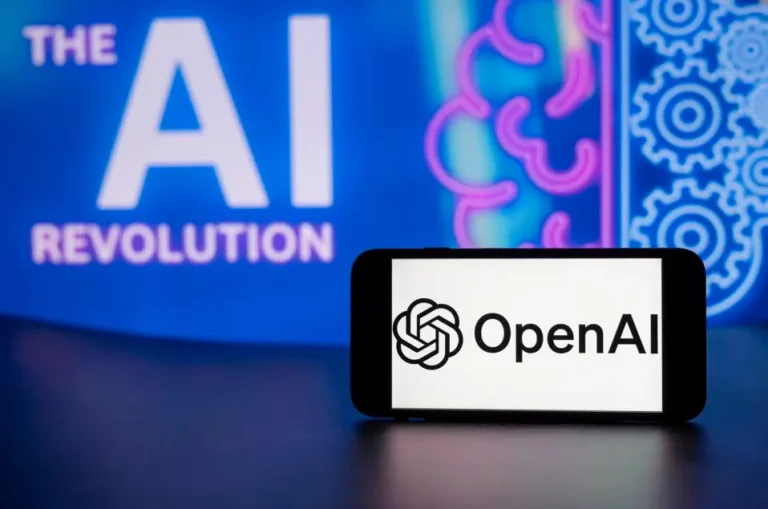Dean DeBiase is a best-selling author and Forbes Contributor reporting on how global leaders and CEOs are rebooting everything from growth, innovation, and technology to talent, culture, competitiveness, and governance across industries and societies.

Why Companies Are Exiting China And What Leaders Can Do About It

By Dean DeBiase
August 30th, 2024
As corporations like Microsoft, Dell, Stanley Black & Decker, Blizzard Entertainment, and Airbnb pull back on China, dozens of others are shifting their global footprints, sighting everything from supply chain concerns to concentration risks. Investors from BlackRock to JC2 Ventures, and the world’s top Tech. firms are making moves to protect their intellectual property (IP) and competitiveness—with many moving their next-gen development projects, like cloud and artificial intelligence (AI), to other countries.
Behind closed doors, leaders and board members will tell you that political tensions, cybersecurity, and rule-of-law concerns are also driving these decisions. IBM is the latest China casualty, who just this week announced they are shutting down their 1000 person R&D facility there.
In the intricate web of global trade, supply chains are the lifelines that connect the world, driving economic growth and ensuring the seamless flow of goods and services across borders. However, as the world has evolved, so too have the complexities of these supply chains. A subtle yet significant imbalance has emerged, where the concentration of power in specific regions has begun to influence global trade dynamics and economic stability. Today, as businesses and economies recover and rebuild in a post-pandemic landscape, the concentration of supply chain power in regions like China has come to the forefront of strategic and governance discussions.
I talked with John Chambers, Cisco’s Chairman Emeritus and CEO of JC2 Ventures, a tech. leader who is pessimistic on China and betting on India, France and America: saying, “I don’t want my startups doing business in China. We are seeing early signs that China is losing its [market] leadership. I felt India would be the most innovative nation in the world over the next several decades. With the best relationships with America, I’m betting on India and big on strategic partnerships.”
A recent report by the State Council Information Office, the People’s Republic of China found that China’s share of global manufacturing output reached around 30% in 2022, equaling nearly $4 trillion, compared with 28.5% in 2018 and 22.3% in 2012. While this concentration has led to remarkable efficiency and cost-effectiveness, it also exposes significant vulnerabilities. A disruption in a single region can now have far-reaching consequences, potentially destabilizing the entire global economy.
Securing Global Supply Chain Diversification
I recently sat down with Lakshmanan Chidambaram (CTL), President and Head of Americas Leadership Council, Tech Mahindra and Americas Head, Mahindra Group – an organization that is at the forefront of redefining supply chain dynamics by addressing this imbalance of power and transforming the industry with AI. He believes that to mitigate the risks of supply chain imbalance and power concentration, and to ensure a more resilient future, “it is imperative to diversify supply chains.”
As for a solution, he shared that by “exploring and investing in alternative hubs, businesses can reduce dependency, foster innovation, and create a more balanced and stable global economy. I believe this approach safeguards against unforeseen disruptions and paves the way for a more equitable distribution of economic power.”
In an increasingly interconnected world, the strength of the global supply chain lies in its diversity. A geographically spread supply chain acts as a buffer against localized disruptions, whether from natural disasters, geopolitical tensions, or economic shifts. It also opens doors to innovation and growth by tapping into local expertise and adapting to different market demands.
According to CTL, the China Plus One (also known as Plus One or C+1) approach has emerged as a strategic path to diversification, encouraging organizations to expand their supply chains beyond China by incorporating an additional location. This strategy was formed in response to the growing awareness of the risks associated with over-reliance on a single country, no matter how efficient. There are several nations that combined can reduce the over-dependence of supply chains on China by moving operations to other parts of the world.
International brands continue to express a growing number of concerns with China and have already shifted production outside of the country. For example, a leading cosmetic brand recently invested over $50 million in its Jakarta plant in Indonesia, moving its base away from China. More companies are also looking to Vietnam, which generated $22.4 billion from foreign direct investment projects in 2022 – an increase of 13.5% over the previous year. Similarly, India’s successful electronics sector is gaining appeal, with electronics exports tripling since 2018. J.P. Morgan estimates a quarter of all iPhones will be made in India by 2025. That is a lot of phones.
How To Partner With Indian Companies
India is emerging as a pivotal player in the global supply chain landscape, positioning itself as a prime alternative to China in the ‘China Plus One’ strategy.
According to CTL and John Chambers, government initiatives like ‘Make in India’ have significantly bolstered the manufacturing sector, with policies designed to ease business operations, attract foreign investments, and create an ecosystem conducive to industrial growth. This push is complemented by India’s abundant skilled workforce and its large domestic market, which together create a robust foundation for sustainable industrial expansion.
India’s labor force is a compelling factor in its rise as a supply chain hub. Recently surpassing China to become the world’s most populous country, India boasts a young and dynamic population, with 60% under the age of 30. This demographic dividend translates into a vast talent pool, particularly in engineering and technical fields, with thousands of engineers graduating each year under the ‘Skill India’ initiative.
Even the World Bank’s CEO has underscored this potential, urging India to capitalize on the ‘China Plus One’ opportunity. This sentiment reflects India’s unique position both geographically and geopolitically. CTL shared that, “as the world’s largest democracy, India offers a stable political environment and a legal framework that supports business continuity. Geographically, its location provides strategic advantages for global trade routes, making it a crucial node in the supply chain network.”
Using AI To Secure Your Ecosystems
When I asked about examples with CTL, I was fascinated by some of the offerings his company has to help clients reboot the imbalance of power and bolster the supply chain with technological innovation.
One such initiative we discussed, “Factories of the Future”, is an interesting example of how digital manufacturing can streamline production. Tech Mahindra recently collaborated with a leading Indian multinational car manufacturer that faced a critical need for end-to-end IT, digital manufacturing, and automation implementation at a scale unmatched in the industry. The company deployed a $40 million complex Manufacturing Execution System (MES) and IT infrastructure across a 230-acre site, supporting 20 large manufacturing shops spread across 700 acres. This solution integrated advanced digital manufacturing and simulation technologies, including BOM Management, Factory 3-D Layouts, and Logistics Planning, enabling seamless real-time operations. By leveraging modern network architecture and the Internet of Things (IoT), production processes can be transformed into more flexible and efficient systems.
With supply chains rocked by unprecedented disruptions, it is also imperative to build resilient supply chains of the future, powered by the precision of Artificial Intelligence (AI). Traditionally, supply chain operations have relied on manual, spreadsheet-based analytics, making them vulnerable to errors and inefficiencies. These are now being transformed by integrating AI-driven forecasting models that drastically reduce errors. That beats old spreadsheets.
Through AI, Mahindra and others are enabling enterprises to relocate production closer to key markets, reducing over-dependence on single sources, and maintaining competitive cost-efficiency. What’s important is having AI-powered enterprise resource planning systems that simplify decision-making and ensure the right information is available at the right time—allowing operators to make swift, agile, and informed decisions.
Rebooting Innovation And Sustainability
In today’s global economy, sustainability is no longer a choice but a necessity, driven by regulatory pressures and the rising demand from consumers and partners alike. Organizations understand that the journey of a product—from raw material sourcing to production, storage, and delivery—carries significant environmental and social implications.
“An organization’s sustainable supply chain strategy must focus on environmental protection, social and ethical responsibility, and strong governance,” said CTL. “This approach is not only about reducing carbon footprints or meeting ESG data reporting standards; it’s also about embedding sustainability at every stage of the value chain. The impact of these efforts is profound—creating positive change that ripples far beyond its direct operations, ensuring that every link in the supply chain is aligned with the company’s commitment to a sustainable and responsible future. This is a testament to how sustainability can drive long-term profitability and viability.”
Sustainable business practices will continue to be top of mind, as the effects of more extreme global incidents wreak havoc on local economies and their supply chains. Geopolitical and environmental policies will also likely play a role in decision-making around which countries to partner with when diversifying.
As the balance of power and complex emerging issues continue to shift around the globe, the most agile companies will be best positioned for competitiveness and growth. Now more than ever, leaders need to find the right partners to help them navigate the messy landscapes ahead to position their company for sustainable success.






